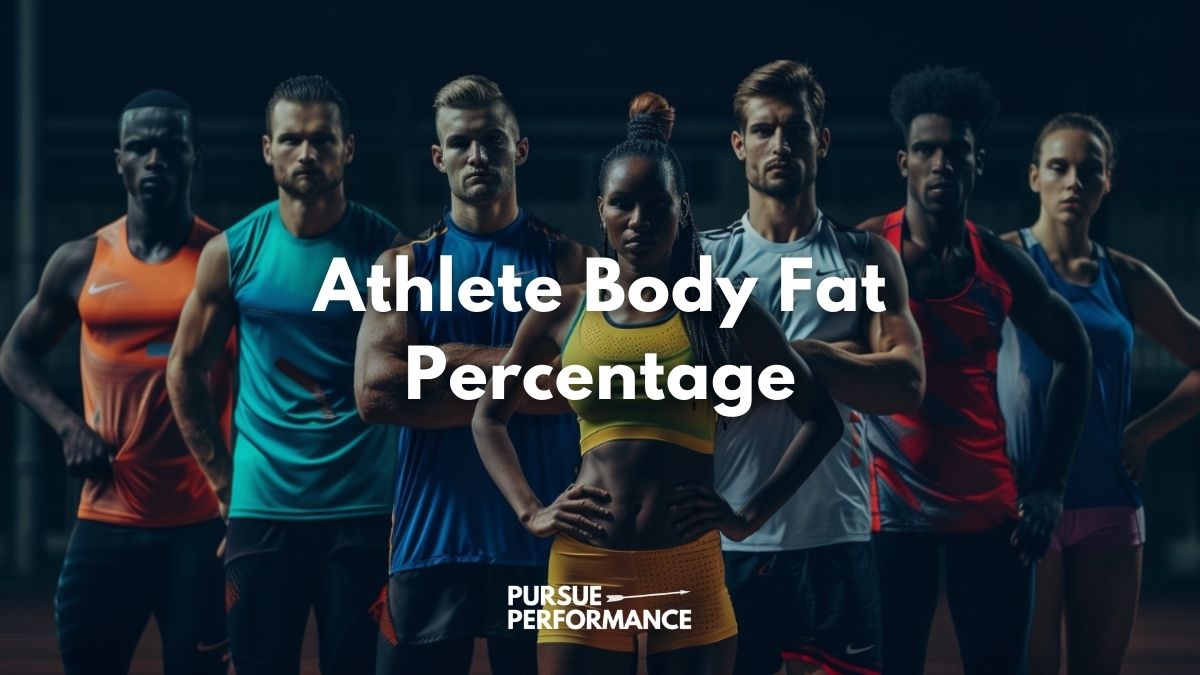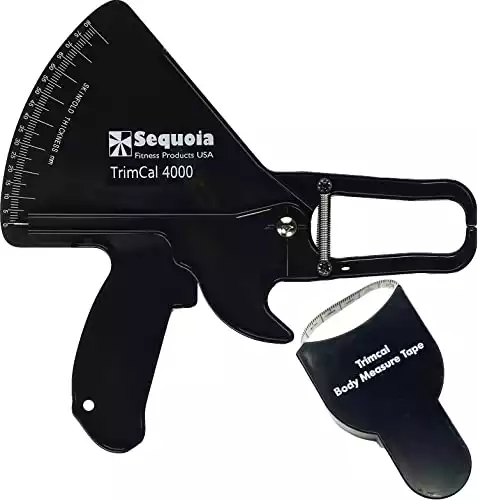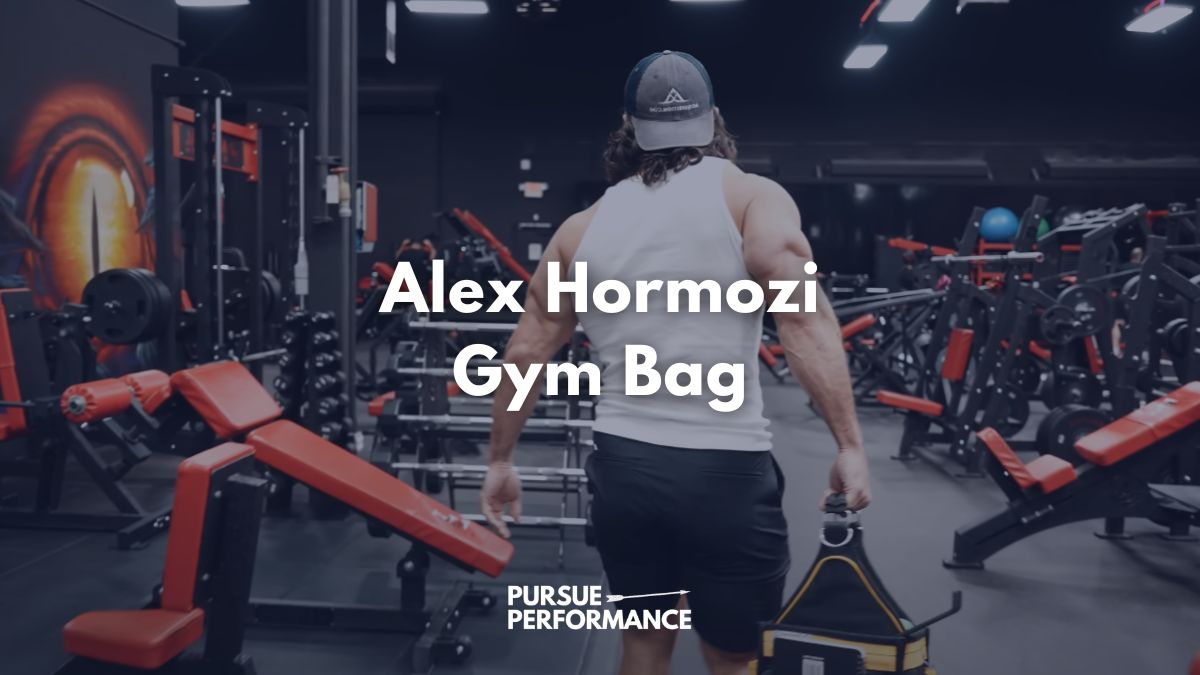For an athlete, body fat percentage is an important metric to measure and manage for optimal health and performance.
Tracking body composition helps athletes fine-tune their training, nutrition, and recovery to reach peak shape.
In this post, we will explore optimal body fat ranges for different sports, testing methods, influencing factors, and common myths about the role of body fat percentage in athletic ability.
Let’s dive in!
Top Recommendations
Best Body Fat Measuring Device: Omron Body Composition Monitor
Best Body Fat Scale: RENPHO Smart Scale
Best Body Fat Calipers: Sequoia Fitness
Why Body Fat Percentage Matters for Athletes
Body fat provides cushioning and insulation for the body.
But too much or too little fat can hamper sports performance and pose health risks.
Finding the optimal zone for your sport maximizes speed, endurance, and power.
It also supports metabolic functions vital for training and recovery.
Tracking changes over time helps tailor nutrition and training needs more precisely.
Athlete Body Fat Percentage Recommendations

Ideal body fat percentages vary among sports based on the demands of each athletic activity.
Endurance Sports: 5%-15% Body Fat
Longer distance runners, cyclists, and triathletes need less fat to keep weight down.
Recommended body fat for women athletes is 8-19%, while male athletes are 5-15%.
Aesthetic Sports: 6%-20% Body Fat
Sports focused on aesthetics and flexibility, like figure skating, gymnastics, and diving, require lower body fat levels to showcase precise movements while providing some cushioning for falls/jump landings.
Related: Extreme Cuts and Weight Loss: Recommendations and Tips
Power Sports 15%-25% Body Fat
Explosive power demanded in football, rugby, lacrosse, and hockey comes from both fat and lean muscle mass.
Slightly higher body fat helps supply consistent energy for intense bursts of effort.
Weight Class Sports: Varies by Division
Wrestlers, boxers, and martial artists need to make specific weight classes so body fat strategies are individualized based on competition needs.
Too little body fat can risk over-dieting.
Athlete Body Fat Percentage by Sport

Ideal body fat percentages vary by gender, sport, and even the position played within the sport.
For example, a quarterback and lineman in football will likely have much different levels of body fat.
Below, we compiled estimated athlete body fat percentage ranges for many popular sports and competitive events.
| Sport | Male Athletes | Female Athletes |
|---|---|---|
| Soccer | 6-18% | 13-18% |
| Basketball | 6-12% | 20-27% |
| Swimming | 9-12% | 14-24% |
| Cycling | 5-15% | 15-20% |
| Tennis | 9-18% | 16-24% |
| Gymnastics | 5-12% | 10-16% |
| Volleyball | 9-15% | 16-24% |
| American Football | 8-22% | N/A |
| Boxing | 6-15% | 12-22% |
| Marathon Running | 5-11% | 10-15% |
| Table Tennis | 8-16% | 14-22% |
| Badminton | 7-15% | 12-20% |
| Judo | 10-20% | 15-25% |
| Rowing | 8-14% | 12-18% |
| Wrestling | 6-15% | 12-20% |
| Triathlon | 5-12% | 10-18% |
| Weightlifting | 12-20% | 18-28% |
| Fencing | 8-14% | 12-18% |
| Sailing | 10-18% | 14-20% |
| Taekwondo | 6-14% | 12-20% |
| Diving | 8-15% | 14-20% |
| Equestrian | 8-18% | 12-22% |
| Canoe/Kayak | 6-15% | 10-20% |
| Modern Pentathlon | 8-15% | 12-20% |
| Archery | 10-20% | 15-25% |
| Bodybuilding | 5-8% | 10-15% |
| Field Hockey | 8-15% | 12-18% |
| Skiing (X Country) | 7-12% | 16-22% |
| High/Long Jumpers | 7-12% | 10-18% |
| Shot Putters | 16-20% | 20-28% |
| Sprinters | 8-10% | 12-20% |
Famous Athletes Body Fat Percentage
Based on estimated body fat percentages by sport, we estimate the body fat percentage range for the most popular athletes in the world.
The exact figures are not disclosed and often fluctuate due to diet plans, in-season training, and personal conditioning.
| Athlete | Sport | Estimated Body Fat Percentage |
|---|---|---|
| Cristiano Ronaldo | Soccer | 7-10% |
| Lionel Messi | Soccer | 8-10% |
| LeBron James | Basketball | 6-8% |
| Tom Brady | American Football | 10-12% |
| Conor McGregor | Mixed Martial Arts | 8-10% |
| Roger Federer | Tennis | 11-14% |
| Rafael Nadal | Tennis | 8-12% |
| Tiger Woods | Golf | 10-15% |
| Virat Kohli | Cricket | 10-15% |
| John Cena | Professional Wrestling/Bodybuilding | 8-12% |
| Stephen Curry | Basketball | 10-13% |
| Phil Mickelson | Golf | 12-15% |
| Kevin Durant | Basketball | 6-9% |
| Neymar Jr. | Soccer | 7-10% |
| Kylian Mbappé | Soccer | 7-10% |
| Lewis Hamilton | Formula 1 Racing | 10-14% |
| Novak Djokovic | Tennis | 6-9% |
| Michael Jordan (in his prime) | Basketball | 8-11% |
| Usain Bolt (in his prime) | Sprinting | 6-8% |
| Serena Williams | Tennis | 20-22% |
Factors Influencing Athlete Body Fat Percentage

Many elements contribute to an athlete’s body fat composition including:
- Genetic Factors: Natural body type and shape potential
- Diet Quality: Calorie intake balance and macros like protein, carbs and fat
- Training Loads: Aerobic, resistance, and cross-training stimulus
- Lifestyle Factors: Sleep, stress and supplement use
- Environment: Heat and altitude exposure
Fine-tuning nutrition, training, recovery, lifestyle, and supplement strategies helps support desired body fat goals over the long-run.
How to Measure Athlete Body Fat Percentage
Tracking body fat is key. Some athlete body fat percentage testing options include:
Skinfold Calipers: Use special calipers to pinch skin in select areas to calculate overall body fat percentage.
Bioelectrical Impedance: A low electrical signal is passed through the body with body fat percentage calculated from resistance results.
Universal Scale: Most scales today offer a BMI or body fat figure. These figures aren’t the most accurate, but they are the easiest to keep track of over time.
Testing body composition at regular intervals gives the best insight on changes in fat to lean muscle ratio over time.
Athlete Body Fat Percentage Myths
Some common myths include that very low body fat is automatically better for performance or that athletes don’t need to worry about body fat if they look fit.
But maintaining reasonable body fat levels leads to sustainable fitness rather than aiming for extremely low body fat just for appearance’s sake.
Building nutrition and training programs to support individual body types is key rather than generic body standards.
Body fat composition tracking lets athletes better customize plans for their needs and goals.
FAQ
What body fat percentage is considered athlete level?
The ideal body fat percentage for athlete health and performance tends to range between 6-25% depending on gender and sport demands. But optimal body composition varies individually based on body type, fitness goals, and sports needs.
Do athletes have low body fat?
Many sports demand higher muscle and lower body fat composition to facilitate speed, endurance and explosive power. But low body fat levels require careful nutrition and training support for health. Overly restricting calories and body fat can negatively impact metabolic and hormonal balance.
Is high body fat bad for athletes?
Higher body fat levels slow athletes down and make movement more difficult due to excess weight. But losing fat too quickly via extreme diet approaches risks muscle loss and metabolic issues. Gradual body fat reduction timed with periods of lowest training demands works best long-term.
What happens if athlete’s body fat is too low/high?
Both excessively high and low body fat creates problems. High body fat levels decrease athletic performance and increase injury risk. But low body fat below 5% in men and 12% in women risks negative health impacts like loss of bone density, amenorrhea in female athletes, poor recovery, and increased illness.










